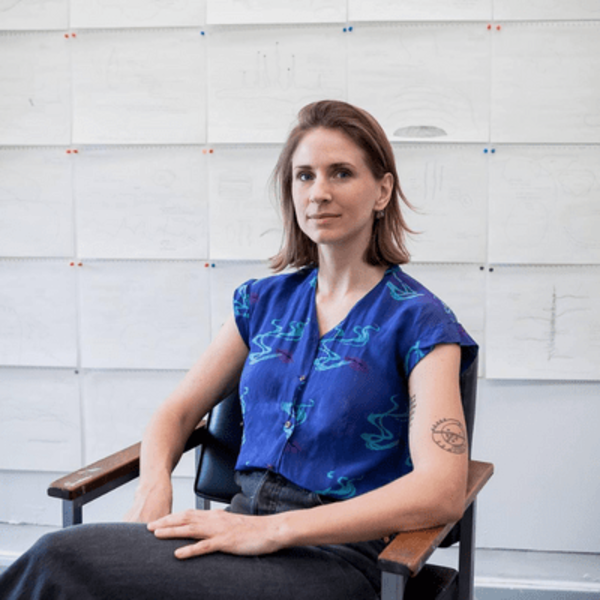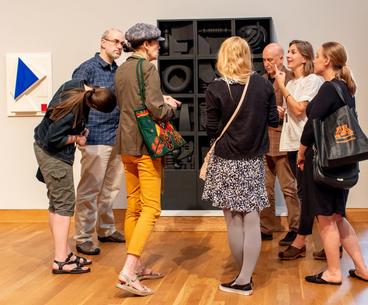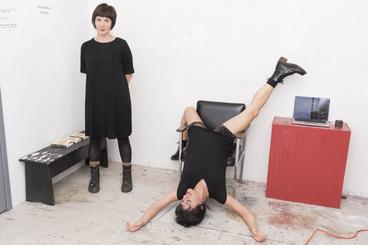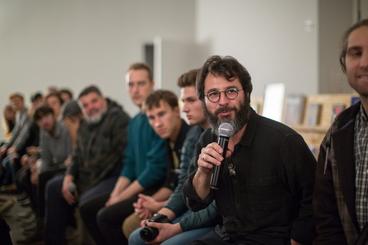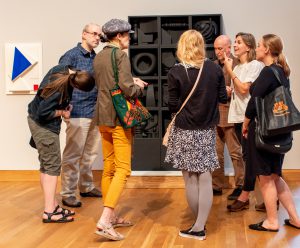
FEATURED ESSAY
The Sensory Loss and Art Symposium at the Weisman Art Museum (WAM) was the end result of my summer-long residency with the Center for Applied Translational Sensory Science (CATSS) at the University of Minnesota. All summer I met with scientists studying all facets of vision and hearing loss, and learned about their individual research interests. It became clear very early on in this process that only three of them (which, in a typical demographic of scientists, is actually quite a high number) have sensory loss themselves. I saw a big gap between their research decisions and the everyday knowledge that arises out of actually living with sensory loss. I wanted to create an event that directly addressed this gap, that would put scientists and individuals who do possess the knowledge of living with sensory loss in close proximity.
I was also excited about bringing a “scientific conversation” into an art institution like WAM. We use our senses to engage with art, and we do so without really questioning how or why we use certain senses to interact with art. Museums play a huge role in creating these “normative rules” that pave the avenues to engage with art. When we enter a museum we are guided by the expectation that we will experience art with our eyes, and not through touch, and certainly not through smell. Our relationship to our senses is directed and shaped by these expectations and rules. It felt important, and connected, and complicated, to have this conversation with scientists in the space of a museum - sort of pointing out everyone's shortcomings.
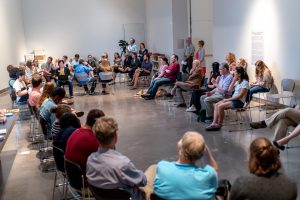
As an artist, working with scientists made me deeply question the differences between disciplines. I witnessed so many incredible parallels between the art studio and the science lab, between the formation of questions, and the presence of larger philosophical thought. My big takeaway from this experience is that as a human species we’ve become too good at categorization and specialization. We think of our senses as separate entities, we think of our fields of research as separate, we think of our genders and cultures as separate too. But the truth is much more complex than we want to admit - nothing exists in isolation. Every experience is a multi-sensory experience; science and art overlap, just like so many other things. We all benefit from diversity, whether that is diversity of backgrounds, diversity of knowledge, diversity of culture, or diversity of sensory makeup. We all need to consider other, unfamiliar to us ways of being more often than we currently do.
The term “normal” arose quite a bit during the symposium. I think this is an important detail because it illustrates how we think of disability as a culture. There is “normal” and there is “abnormal”. The truth, of course, is that “normal” doesn’t exist, but conventions of normal exist and are constantly reinforced in the design of the world. Art is not currently being made for blind people, social environments are not currently being designed for Deaf or hard of hearing people, and public spaces are not often considering “non-normative” individuals in their conception.
What we are given is a normative model, and then accessibility programming. But the problem with accessibility programming is that it still asks us disabled folks to do the work to get to the normative ideals. I think the biggest problem we face in making progress toward an entirely inclusive society is assuming that accessibility programming is enough. It’s not. In fact, we are so far behind that we are impressed when a museum offers audio descriptions of artwork so that blind people can “experience” the work. Institutions, of all kinds, bring in accessibility programming, meet ADA compliance, and that’s the end of the story.
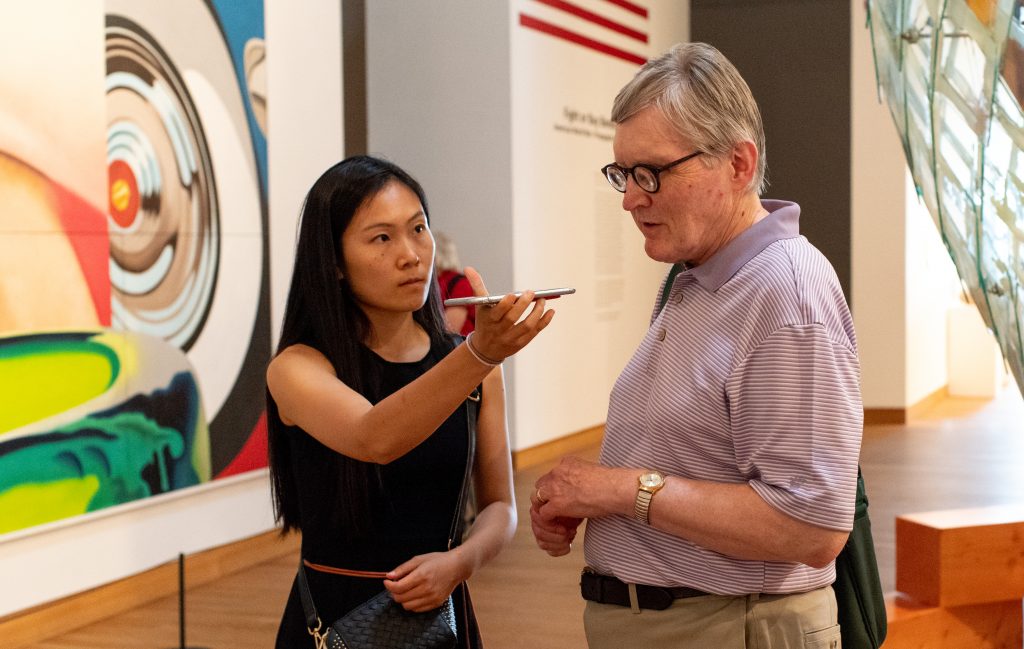
I dream of much bigger changes. I completely shun the concept of accessibility programming. I completely shun the concept of normal. I want the fundamental design of things, from conception, to be centralized around a diversity of experiences, and bodies, and cultures. I want museums designed for all sorts of disabled people, I want artists and curators to be considering these experiences in the histories we write. I want “normal” as a concept, to retire. I want to be able to go to a movie, a museum or a play any day of the week, not on specific day and time that makes them “accessible”. Accessibility programming is a sort of erasure. It’s divisive, and even though it has good intentions, it is not the answer.
There is so much work to do! I am grateful for the support of Boris Oicherman, the curator I am working with at the Weisman. I am grateful for Peggy Nelson and Gordon Legge and all of the PhD students and postdoc scientists who were so generous with their time in the formation of the Sensory Loss Symposium. I’m grateful for the individuals at the Mia and the Bell Museum who met with me this summer and talked to me about their accessibility programs. I’m grateful to the individuals with sensory loss who participated in the symposium and who made themselves vulnerable by vocalizing their experiences and allowed their exclusion to be witnessed.
All of these relationships feel interlaced and important in the progress I want to make. This symposium was just the very, very beginning. I am planning to take this work up again through a longer residency at WAM and CATSS next year. As an artist, and as an individual with a disability, I plan to infiltrate the university and the museum and change the way sensory disabilities are dealt with, in research and in art. And even after I’ve done this, it will just be another beginning, with a whole lot of work ahead.
The Sensory Loss Symposium took place at the Weisman Art Museum on September 13, 2018. In February 2019, Sylvestre received the Citizen Advocate Award from the State of Minnesota's Commission on the Deaf, Deafblind, and Hard of Hearing in recognition of her advocacy and her work in producing The Sensory Loss Symposium.
Liza Sylvestre
Liza Sylvestre is a transdisciplinary artist and a Research Assistant Professor within the College of Fine and Applied Arts at UIUC where she has co-founded the initiative Crip*––Cripistemologyand the Arts (Crip*). Her work has been shown internationally at venues including the Plains Art Museum (Fargo), Weisman Art Museum (Minneapolis), Roots & Culture (Chicago), Soap Factory (Minneapolis), Soo Visual Arts Center (Minneapolis), John Hansard Gallery (Southampton, UK), ARGOS (Brussels), MMK (Frankfurt, Germany), MIT List Visual Arts Center (Cambridge), Collective (Edinburgh, Scotland), and Marta Herford (Herford, Germany). Sylvestre has been the recipient of both an Artists Initiative and an Arts Learning grant from the Minnesota State Arts Board, a fellowship through Art(ists) on the Verge, and most recently she has been named a 2021 Joan Mitchell Foundation Fellow and a 2022 Louis Comfort Tiffany Fellow. She has been artist-in-residence of the Weisman Art Museum and the Center for Applied and Translational Sensory Science (CATSS). In 2019 she received a Citizens Advocate Award from the Minnesota Commission of the Deaf, DeafBlind, and Hard of Hearing (MNCDHH). Sylvestre work has been written about in Art in America, Mousse Magazine, OculaMagazine, Art Monthly, SciArt Magazine and others.
